Thank you to Marsha de Cordova for taking a few moments out of her busy schedule to celebrate with us Nystagmus Awareness Day 2024 in our Ruby Year.
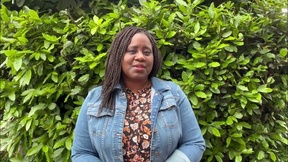

Thank you to Marsha de Cordova for taking a few moments out of her busy schedule to celebrate with us Nystagmus Awareness Day 2024 in our Ruby Year.
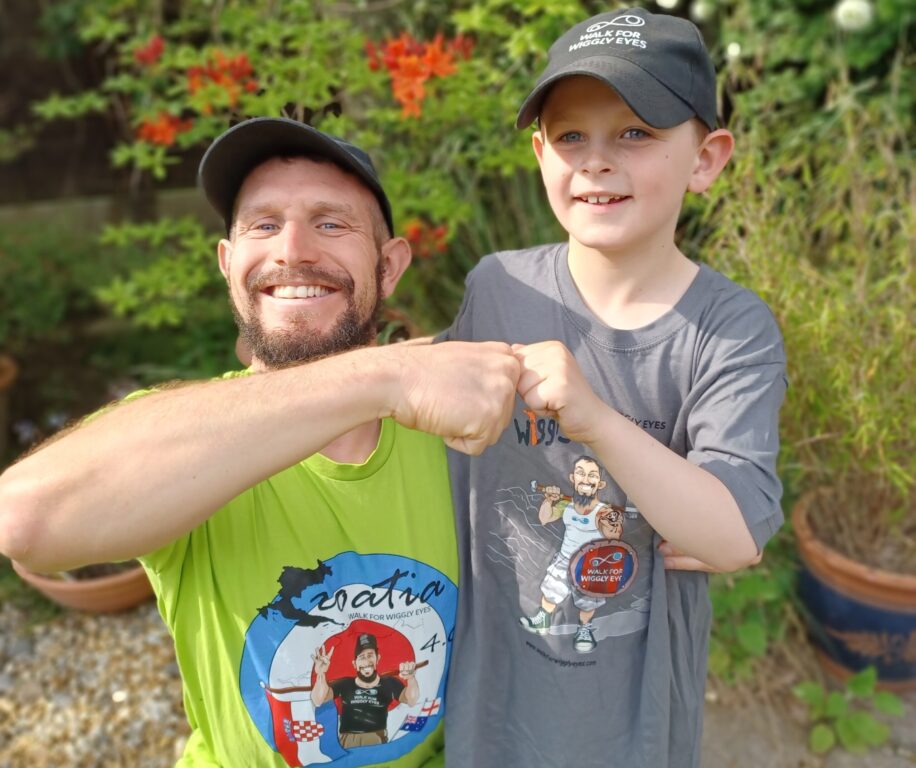
As Mike takes on his latest Walk for Wiggly Eyes 4 challenge in Croatia, his Mum, Karen, tells us about an amazing party she hosted for Mike, his family and friends at home in Southampton.
“Mike of Walk for Wiggly Eyes (W4WE) had a week’s stop at home before he started the challenging 1400 mile walk along the Croatian Long Distance Trail (CLDT). This presented a great opportunity for friends and family to have a get together for a fun(d) raising party. Thanks to the generosity of everyone and the fantastic gifts that were given as prizes for the raffle, over £900 was raised to share between the Nystagmus Network and Gift Of Sight.
‘Mike has congenital nystagmus and consequently his vision is impaired however his inspiration for this walk is his nephew Archie (pictured with Mike) who also was born with nystagmus. Mike’s goal via his W4WE fundraising is to continue to raise awareness of nystagmus and donations to fund ongoing research to improve the sight of those living with nystagmus and other eyesight conditions.
‘Mike is now on the CLDT trail and he is going to have to tackle many obstacles along the way. You can follow his journey via https://www.walkforwigglyeyes.com/ and if you would like to donate to help Mike reach his target please click on the link https://www.justgiving.com/page/walk-for-wiggly-eyes-nystagmus-network4″
Thank you Karen and thank you to everyone who gave so generously at the party.
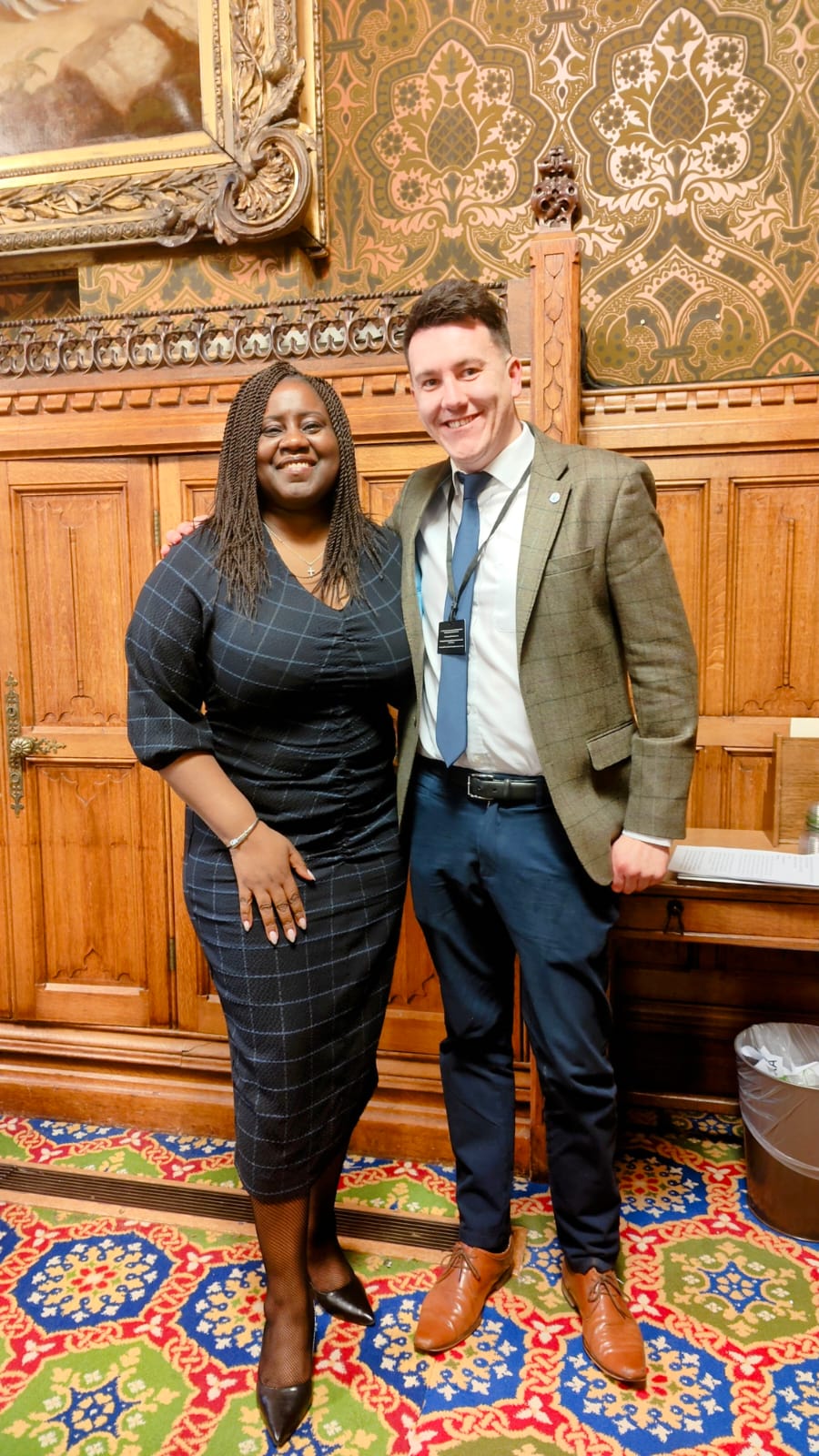
George has not yet completed his first month as an intern Information Support Officer with the Nystagmus Network. This week he was given a very special assignment, to give oral evidence to the APPG on eye health and visual impairment as they undertake their inquiry into employer attitudes and blind and visually impaired people.
Stepping into the historic halls of Parliament, I felt a mix of excitement and nerves. As a visually impaired individual, the opportunity to speak at the All Party Parliamentary Group (APPG) on Lived Experience was not just a chance to share my perspective but also a responsibility to advocate for greater inclusivity in the workplace. Chaired by the esteemed MP Marsha de Cordova, the session focused on gathering oral evidence for the inquiry into employers’ attitudes towards individuals with visual impairments.
Representing the Nystagmus Network was both an honour and a privilege. As an advocate for individuals with visual impairments, I had the opportunity to shine a spotlight on the invaluable work carried out by the Nystagmus Network in supporting people living with nystagmus.
One of the most striking aspects of the session was the genuine interest and engagement from the other speakers and hearing about their own personal experiences. Marsha de Cordova’s leadership fostered an environment where every voice was not just heard but valued. As she turned to me for my response, I spoke passionately about the barriers faced by individuals with visual impairments in securing and maintaining employment. From inaccessible job application processes to the lack of accommodations in the workplace, I highlighted the systemic challenges that often hinder the professional aspirations of individuals with sight loss. Drawing from my own journey, I emphasised the importance of proactive measures such as reasonable adjustments and awareness training to create more inclusive work environments.
The exchange that followed was not just a dialogue but a catalyst for change. Marsha de Cordova’s thoughtful questions and receptiveness to our testimonies signalled a genuine willingness to address the issues at hand. Through open and honest conversation, I felt a sense of optimism that real progress could be made towards dismantling barriers and fostering greater inclusivity.
Leaving Parliament that day, I carried with me a renewed sense of purpose. While the road ahead may be challenging, the experience reaffirmed my belief in the power of advocacy and collective action. As Marsha de Cordova continues to champion disability rights within the halls of Parliament, I remain committed to lending my voice to the cause and working towards a future where every individual, regardless of their abilities, can thrive in the workplace.
In conclusion, my participation in the APPG Lived Experience was not just an opportunity to speak truth to power but a testament to the resilience and determination of individuals with visual impairments. Together, let us continue to advocate for a world where inclusivity is not just a goal but a reality for all.
George Plumridge
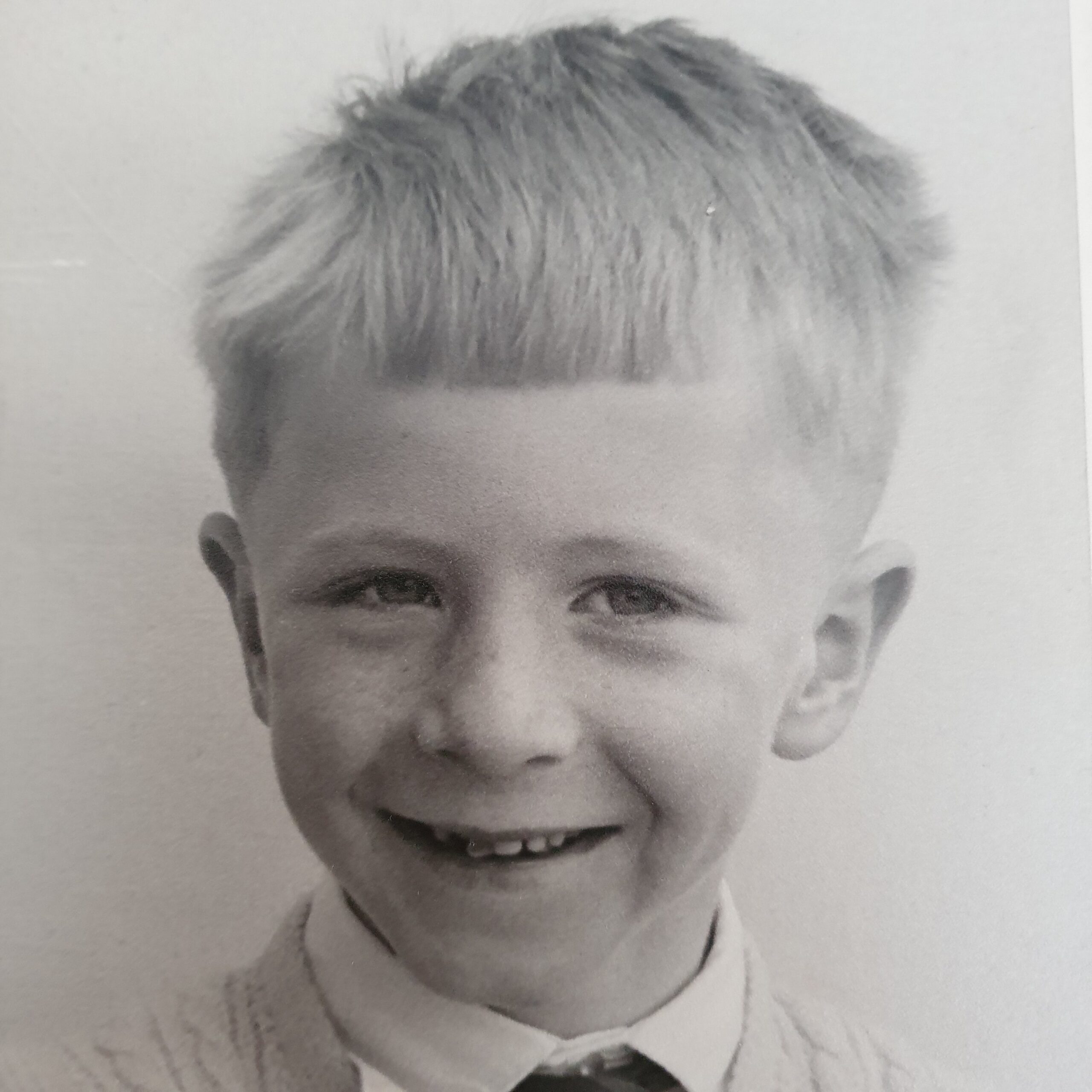
This Nystagmus Awareness Day we’re asking people to share their story.
John’s nystagmus story is a letter to his 9-year-old self
To the best of my recollection, I was about eight or nine when I really began to worry about nystagmus. Most of all, I worried about what I could not see and what I might not be able to do.
Even before I was eight, I knew that how I see the world is different from most other people. That explained the regular visits to eye hospitals. But I didn’t really understand how differently I see the world. I’m not sure I do even now, almost 60 years later. But I know a lot more than I did then. And if I’d known then just half of what I know now life would have been so much easier.
That’s the reason I’m writing this letter. Not for me, but for those of you with nystagmus who are eight or nine years old now. And for your parents, families and friends. And indeed for anyone – teachers, classroom assistants, doctors, opticians and orthoptists – who meet you.
The first point I want to make is that having nystagmus is not as bad as some people think. Yes, nystagmus can be a nuisance, but it shouldn’t ruin your life. I know a lot of people with nystagmus and am amazed at what they do, from acting and singing and writing and playing music to being doctors and teachers and successful business people.
Secondly, it’s easy to fixate on what we can’t do – or struggle to do – because of nystagmus (catch a ball, drive a car, become an airline pilot, etc). Instead, my advice is to focus on what you can do. For instance, catching a ball is hard with nystagmus, but you’ll find all kinds of sports and activities that you CAN DO.
True, most of us with nystagmus can’t see well enough to drive, but we can and do travel and get around. By the way, personally, I enjoy being driven around. And it’s great not worrying about parking a car, petrol prices or being a taxi driver for other people.
In my experience then we can do most things, even if sometimes we have to be a bit creative and flexible. In fact, it’s entirely possible that having nystagmus helps us “think outside the box”. And that’s a very useful skill to have.
Thirdly, I have a piece of advice. You do need to talk about nystagmus. This can be hard, but think of it this way: most other people – even grown-ups – have no idea what it’s like to have nystagmus unless we tell them. So they can’t help us unless we say what we see – or don’t see.
If you think about it, there’s a lot to tell people. How do they know our world doesn’t move all the time? That it’s tiring doing close work, especially with numbers. That things around us aren’t always quite where they seem. That it’s frustrating that other people see us long before we see them. That it makes you sad to be picked last for a sports team. That teachers forget we can’t see what’s on the board. That finding friends in the playground or a word on a page is hard.
The good thing is that if you talk about nystagmus and how it affects you, most people are interested and want to help. They will change the way they do things. They will give you a seat near the front. They will read out the restaurant menu that’s too far away and / or too small for you to see.
And that’s a point worth remembering. The problem isn’t with you or your eyes, but with how the world around you is designed. The menu is TOO FAR AWAY. The print size is TOO SMALL.
My final point is that it’s wrong to say – as some people do – that we can’t do anything about nystagmus. Yes, I know that doctors can’t cure nystagmus – at least not yet. But, as hopefully I’ve explained above, there are lots of little, everyday things that we and doctors and family and friends and everyone around us can do to make our lives easier.
So, don’t despair or feel sad. Talk about nystagmus and focus on what you can do. You might surprise yourself!
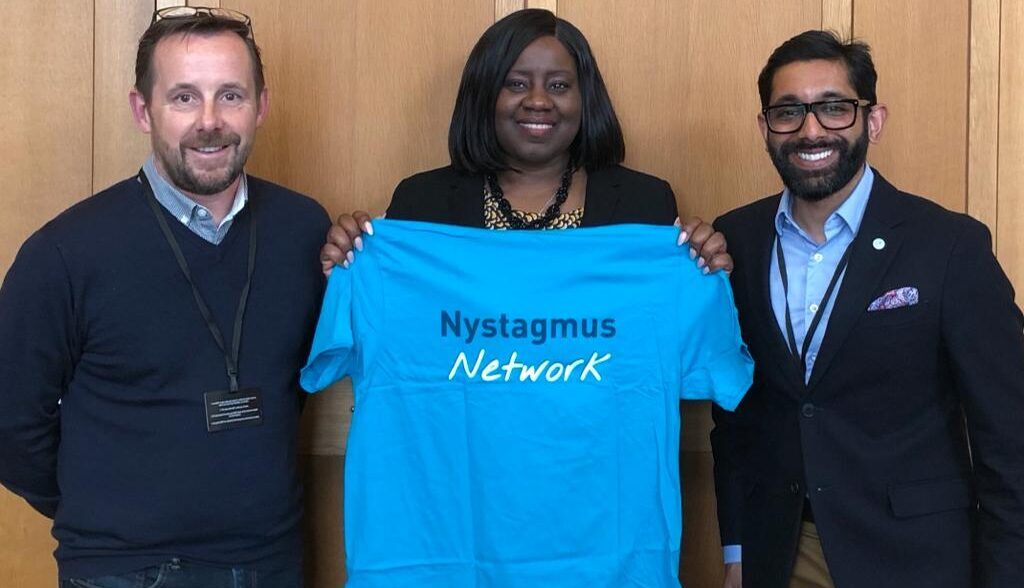
The Nystagmus Network has welcomed the publication of new guidance on the management of nystagmus in children by the Royal College of Ophthalmologists.
The purpose of the Clinical Practice Points, now available on the Royal College website, is to provide a single point of reference for busy clinicians when managing patients with this complex eye condition.
The Nystagmus Network contributed to the development of the Practice Points through its membership of NUKE, the nystagmus UK eye research group. Members of NUKE worked together to develop a Nystagmus Care Pathway which sets guidelines on diagnosis and care for patients with nystagmus – the first time such guidelines have been created for this condition.
Vivien Jones, founder and Honorary President of the Nystagmus Network, said “The adoption of these guidelines means that clinicians can now refer to them when treating patients with nystagmus – something that we hope will lead to continuing improvements in developing standardisation of medical diagnosis and care.”
Clinician Jay Self, University of Southampton, an author of the Practice Points and founding member of NUKE said “Managing children with nystagmus can be complex and nuanced. By sharing best practice, in an easy to follow guide, we hope to improve all aspects of care for children and their families.”
Coinciding with the publication, Nystagmus Network trustees met Marsha De Cordova MP, who chairs the Eye Health and Visual Impairment All Party Parliamentary Working Group. Trustees were able to brief the MP, who herself has nystagmus, on the future impact of the work that has been done and the publication of the Practice Points.
Marsha is pictured above (centre) with Nystagmus Network trustees Peter Greenwood (left) and Harshal Kubavat (right).
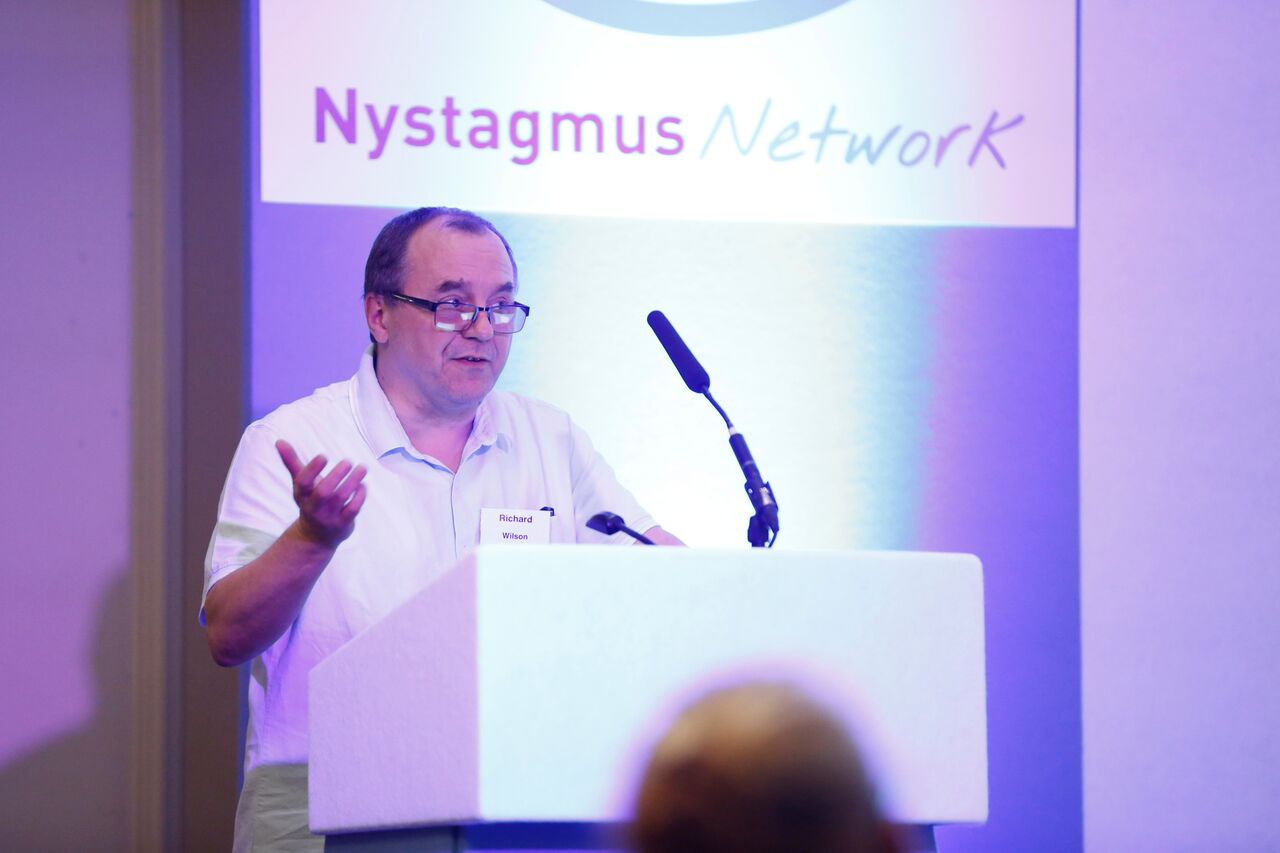
We are sorry to share the sad news that Richard Wilson, Chairman of the Nystagmus Network from 2011 to 2019, passed away over the Easter weekend.
Richard’s contribution to the work of the charity and the nystagmus cause is immeasurable.
His most notable achievements include our first ever clinical training day, the introduction of an annual UK nystagmus research workshop and, of course, Nystagmus Awareness Day, which we first celebrated nationally and internationally back in 2013.
Of that day Richard himself said:
“What a momentous day this has been. I am hugely proud to hold the chairmanship of the Nystagmus Network at this time. We have done something very special today. Brilliant people doing truly brilliant things. Perhaps we should do it again? But for now, let us just reflect on this success and sleep well knowing we have changed perceptions and some attitudes.”
Just a few days ago Richard urged charity trustees and staff to “Keep doing all the great stuff for the Nystagmus Network! And keep smiling.”
Thank you for everything, Richard, and we promise we will! – from all of us at the Nystagmus Network

Parents and carers of children and young people with nystagmus are warmly invited to our first Parents’ Get Together of the year. We are delighted to share that Becky Hyams will be joining us as our special guest. Becky is a second year university student, studying Advertising and Digital Marketing. She has nystagmus herself. She will be sharing her experiences of school, university and also how she wants to raise awareness of disability to help educate others. Becky has created her own blog and social media accounts, ‘beckys.blurred.perspective’ to help achieve this.
If you’d like to receive an invitation to the get together on Tuesday 21 February from 7.30pm, please email us at [email protected]
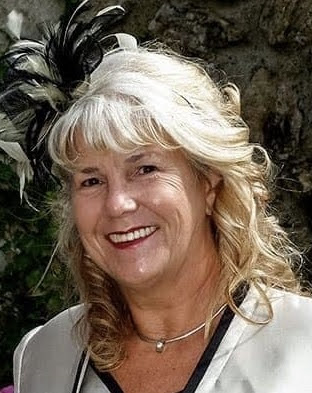
We know you will enjoy reading about Carol’s experiences. She thinks of her nystagmus as a quirky trait that doesn’t define who she is and hopes you will find her story encouraging.
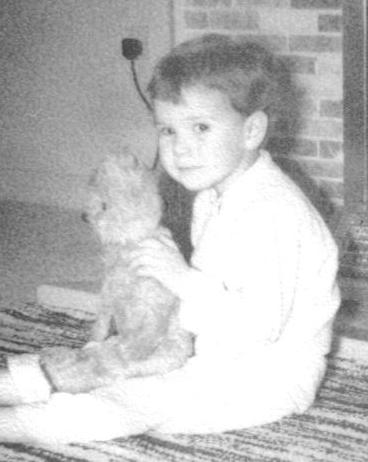
I was born in early 1959. My Mother, younger brother and I lived with my Grandparents in Glasgow.
Hold your head straight!
Around the age of 7, we got a black and white TV. I would sit on a wooden stool in front of it and get told off for being too close and to “hold your head straight” when looking at the screen. I was unaware that I looked at everything from an angle – holding my head about 45 degrees to the right of my target and with a distinct tilt to my head.
My Mother took me to an Optician who prescribed glasses with a patch over one eye, to correct my “lazy eye”. I was constantly having my head straightened, which put everything out of focus, or made me see double.
At school, I sat in the front row but would often have difficulty reading the blackboard. Arithmetic and Maths were the most awkward as the printed squares in the school jotters were blurred. Neatly entering numbers in those squares required a tilt of the head that had me looking sideways and focusing out of the extreme corner of my left eye.
Glasses didn’t help
Teachers, family and the Optician finally agreed the glasses were not solving the problem and, around the age of 10, I was referred to an Ophthalmologist at the general hospital.
The tests involved looking into a strange tunnel-like contraption with moving figures and shapes that I had to line up. Sometimes I couldn’t even see the shapes, because my head was held straight in the machine. They put drops in my eyes that blurred my vision completely for several hours. Despite this I was sent back to school right after the appointment, having been told very little about what was going on, either by my Mother or the Doctor.
Hearing the word Nystagmus for the first time
After some time, we had an appointment with the Doctor and I heard the term Nystagmus for the first time. Apparently, it was genetic, although no one else in the family seemed to have the “condition”. The friendly Doctor told me I had “wobbly eyes” and in future, boys would find it very attractive! It would not get better, it might get worse and there was nothing to be done about it.
Can you re-train your brain?
At last the glasses were consigned to the bin! I was told to try to look straight ahead and re-train my brain. Little was known about it so, other than people asking me to look straight at them so they could see my eyes dance for their amusement, I just got on with life.
Why are you looking over my shoulder?
I left school after Highers, trained and worked as a computer programmer. Back then, code was handwritten – those pesky square boxes again! My way of looking at things was quite natural to me, even if it looked off to others. People who did not know me would ask why I was looking over their shoulder during conversation, or they would turn around to see who else I was looking at! I adjusted my stance so that it was my body that was at an angle to the other person, allowing my tilted head to face them. These adaptations evolved over time and somewhat unconsciously.
From programming, I moved into business management and eventually became CEO of country operations in a major oil and gas company.
I took early retirement and sailed around the world with my husband in a 42-foot yacht, navigating from paper charts and small screen electronics.
I now work in research in a University.
Many challenges
There have been many challenges beyond the boxes on forms. My peripheral vision is blurred. This affects my confidence when driving and lights at night are scary. Combined with rain, I change my travel plans. Going down stairs and escalators requires some concentration to know where the edge of a step is. That said, I have climbed many mountains (literally) and I hold handrails or walls to maintain balance and perspective.
Entering a digital world
As the world went digital, I angled my screen rather than my head. Phone texting only became possible with smartphones and the option of enlarging the display characters. Filling in printed forms and signing within a lined box remain frustrating to this day. To read a long array of numbers, such as telephone or IBAN, I have to move my finger over the preceding numbers to the next in line, in order to see each digit clearly.
My general eyesight has deteriorated and I now wear glasses. I can’t have contact lenses due to the wobble and apparently this means no form of laser surgery is possible. Small frames crowd my vision, so my choice in style of glasses is limited. Varifocals have been even more challenging and I have had to relearn my head angles and speed of movement in order to refocus.
I don’t see nystagmus as a disability
I have spent 60+ years thinking this was just a funny and rather unique aspect of being me. Perhaps because I have lived out of the UK since 1988, I have only recently become aware of the Nystagmus Network and the extent of the membership. It has made me reflect on and be more conscious of my experience and adaptations. Having had no comparison or reference, I did not consider my condition an impairment or disability. No one ever told me I could not do something because of it. I wonder if my own and society’s lack of awareness during these past years meant I was not hindered in achieving my goals regardless?
Sadly, my Mother is registered blind as a result of macular degeneration. My Stepmother leads a fundraising team for Guide Dogs. Visual impairment is ever closer to home; yet I still did not consider nystagmus in this context until I started following the Network this year.
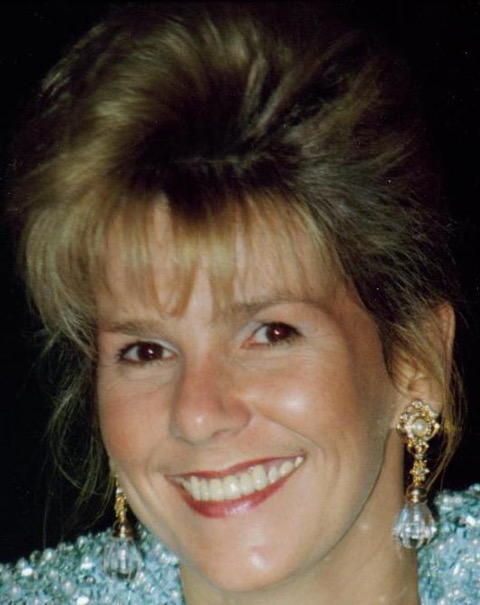
Live life to the fullest
I welcome the new knowledge and insights the Network is providing, along with support to those with the condition. In reading many of the stories and comments shared, I recognise the limitations and pressures experienced in these current times. I would encourage everyone, especially the youngsters, to understand their specific personal challenges, find appropriate support, consider the necessary adaptations as enablers and live life to the fullest.
If you would like to share your nystagmus story, please email us at [email protected]
A Nystagmus Champion is someone who goes above and beyond to raise awareness of the condition, to raise funds or generally make life better for people living with nystagmus.
The Nystagmus Champions of 2022, announced at our virtual Open Day on 1 October are:

Mum to Maisie and partner to Myles, we’re sure it’s no surprise to them that Lucy has been nominated as a Nystagmus Champion for her baking skills. We’re no Paul or Prue, but we know that there must be something very special about Lucy’s cakes and about Lucy, herself. Earlier this year, Lucy took on a 12-hour bake-a-thon, making everything from Lemon Drizzle cake to chocolate brownies. She did get Maisie’s nursery to join in, too, but baked most of the cakes herself, making full use of her two ovens at home. She raised a lot of awareness and a phenomenal £2,000. Well done, Lucy! And thank you!
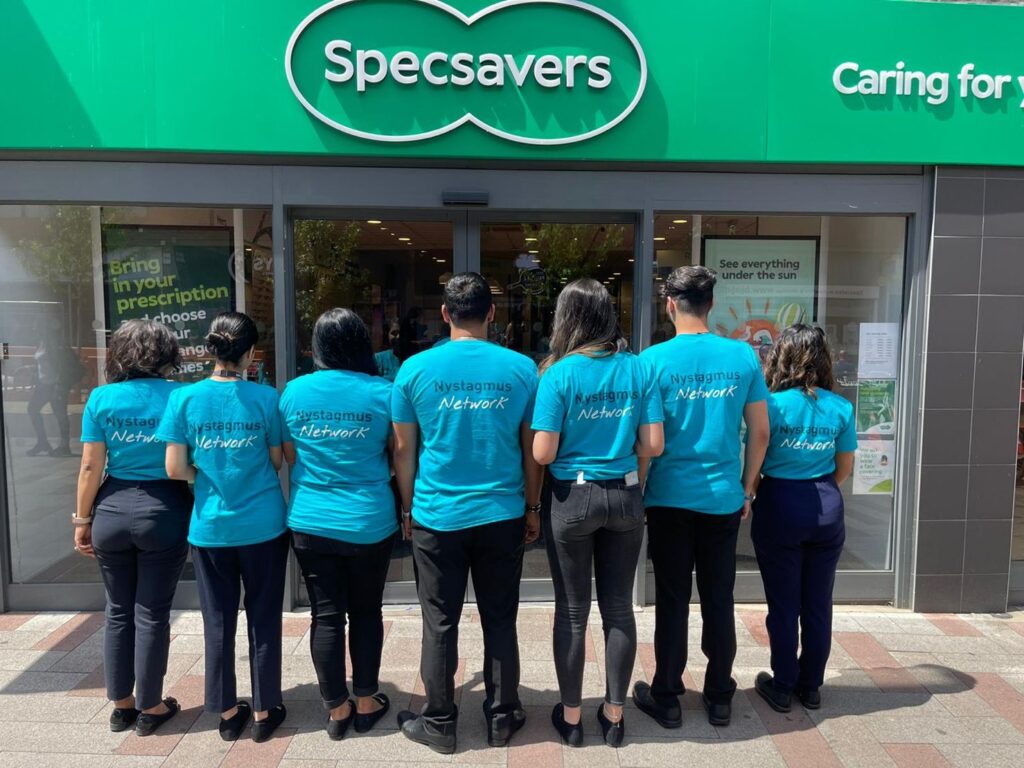
Back in June we took a call from an enthusiastic young man. He said he’d like to take part in Nystagmus Awareness Day and could we please send him some T-shirts. This was Khalil. As we chatted, he revealed that he had nystagmus himself. He also shared that he was the Assistant Manager of the Leicester branch of Specsavers. What a tremendous achievement! Khalil has been nominated as a Nystagmus Champion of 2022 for persuading his entire staff team to wear Nystagmus Network T-shirts and wristbands on Nystagmus Awareness Day and sharing the photos across the local press and social media. Thank you, Khalil. We are so grateful for your support.

2022 was not the first time that Tracy chose to do something energetic for the nystagmus cause. But this time it was particularly strenuous. She took part in the full Ironman. If you’re not sure what that is, it’s a 2.4 mile swim, followed by a 112 mile bike ride, followed by a 26.2 mile run. Yes, that’s right. That last bit is a marathon! Despite picking up a knee injury in training, Tracy completed the challenge and raised £1,500 in the process, making her family and especially her son, Alfie, very proud indeed. Thank you, Tracy for all the energy. You are a Nystagmus Champion.
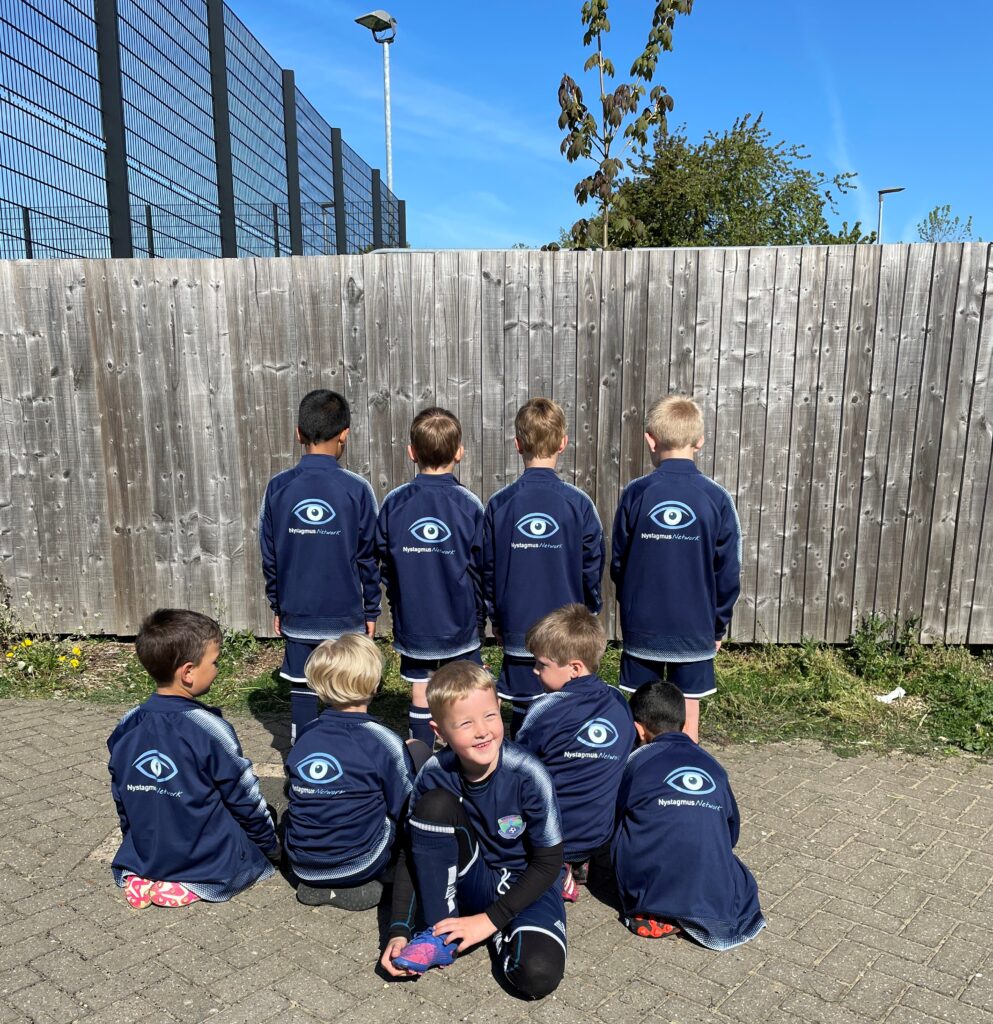
7-year-old Charlie has nystagmus. He’s also a huge football fan and one to watch for the future, we think. When his cub team were looking for sponsorship for their kit, young Charlie decided to write to his Mum’s bank. They would have plenty of money! Luke, the bank manager took part in a triathlon and raised the sum needed, but then he asked Charlie to nominate a charity whose logo should appear on the kit. And this is how the boys got their Nystagmus Network sports tops. And don’t they look smart! We’re not sure how the tops have helped with goal scoring, but we’re sure that Charlie has a stellar career ahead of him. Congratulations, Charlie.
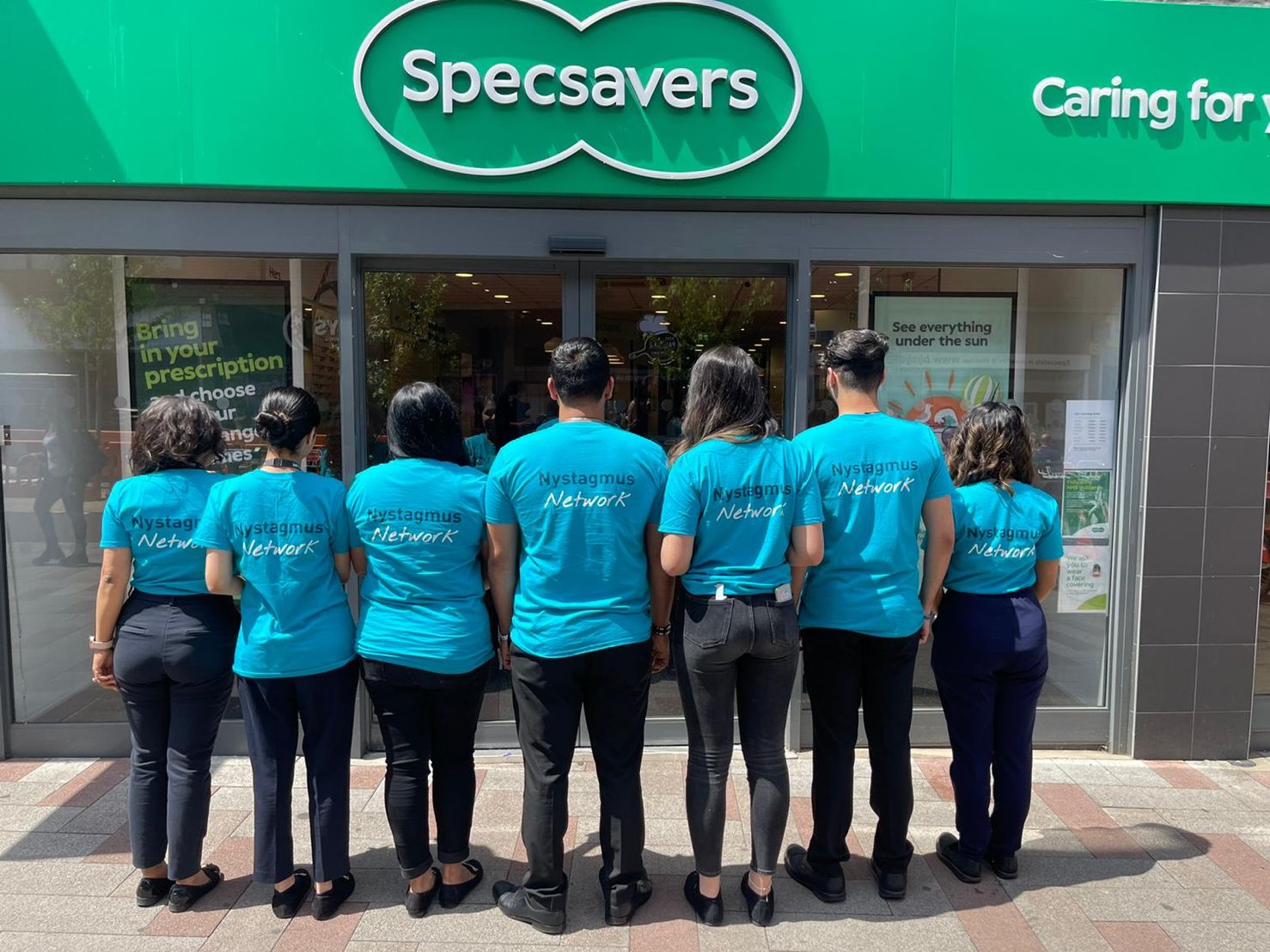
Having nystagmus hasn’t stopped Leicester’s Khalil Musani from forging a career in optics and helping others look after their eyes
When Khalil secured a Saturday job at a Leicester opticians in 2017 it proved to be the catalyst to fulfilling his ambition to work in optometry.
Now, aged 21, and assistant manager at Specsavers Leicester, Khalil wants to raise awareness of nystagmus, the condition he has lived with for most of his life, alongside building a career in optics.
On Nystagmus Awareness Day 2022, Khalil and his entire staff team donned Nystagmus Network T-shirts and wristbands to raise awareness of nystagmus and support the work of the charity.
For his tremendous support, raising awareness of nystagmus and to honour his career success, the Nystagmus Network has nominated Khalil one of the ‘nystagmus champions’ of 2022. Join us to celebrate Khalil and all the nystagmus champions of 2022 at Open Day.
Khalil’s inspiring story has been told in local press articles in print and online.